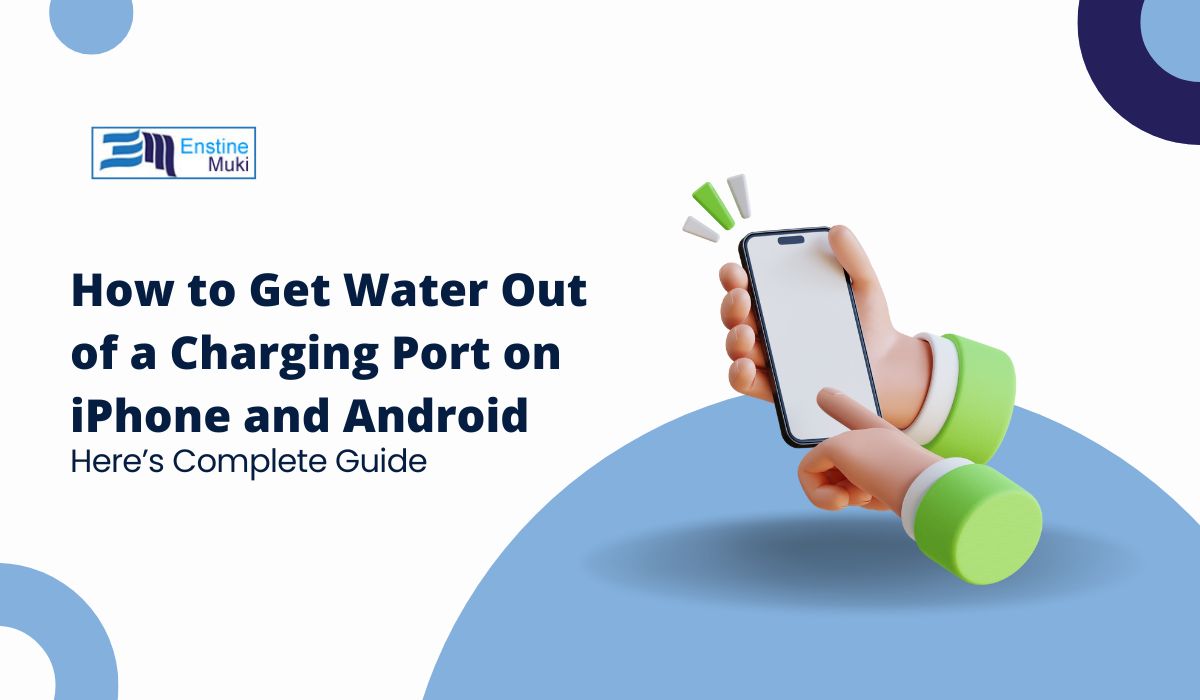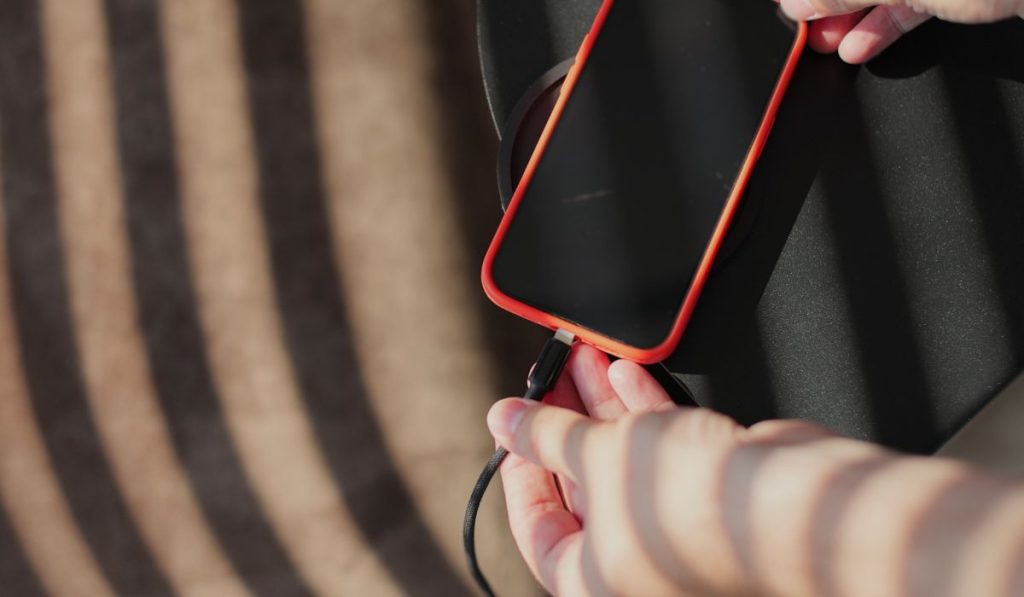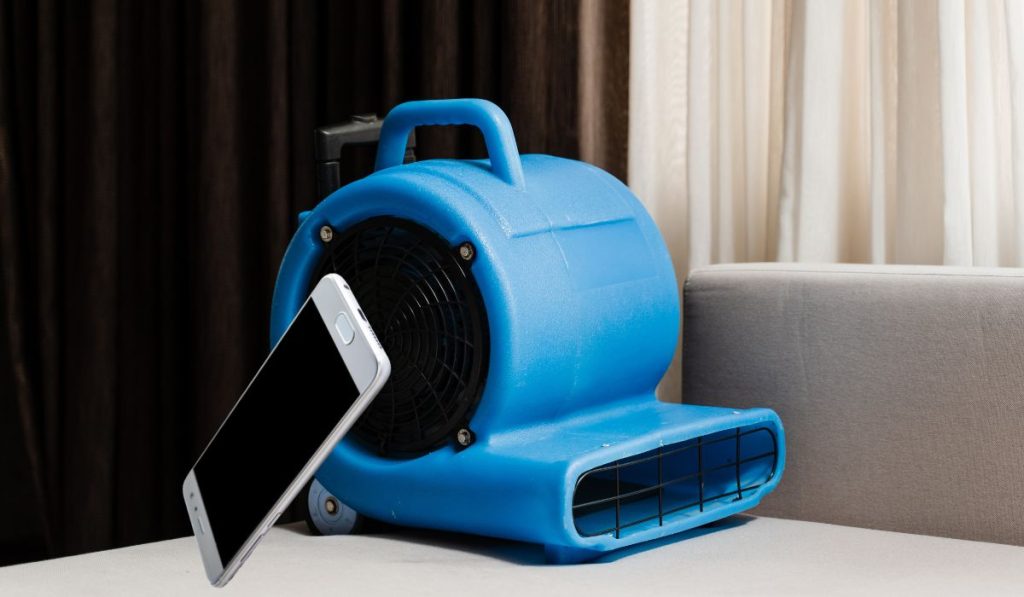Water in your phone’s charging port can lead to charging issues, corrosion, or even permanent damage if not handled correctly. In this guide, we’ll walk you through safe, effective ways to dry out your charging port on both Android and iPhone devices, along with essential tips to avoid further damage.
Why It’s Important to Remove Water from Your Charging Port
When water gets into your charging port, it can interfere with charging, slow down performance, or cause internal components to short-circuit. If your phone displays moisture warnings or fails to charge, it’s likely that water has entered the port. Addressing it quickly is key to preventing further damage.
How to Get Water Out of Your Charging Port: Android and iPhone
Immediate Steps to Take When Water Gets in the Charging Port:
- Turn Off the Device
Powering off your phone immediately helps protect it from short-circuits that water may cause. Avoid turning it on until the port is completely dry. - Remove All Accessories
Disconnect any accessories, headphones, or chargers to prevent moisture from spreading further into the device. - Do Not Charge the Device
Avoid plugging in your phone while the port is wet. Attempting to charge can worsen the damage, as water can interfere with the charging mechanism.
Effective Methods to Dry Out Your Charging Port
Air Drying
The simplest method is to let your phone air-dry naturally. Hold your device upright, with the charging port facing down, allowing gravity to assist in draining any water. Place the phone in a dry, well-ventilated area for a few hours without trying to accelerate the process.
Gently Tapping to Remove Excess Water
Hold the phone with the charging port facing down and gently tap the back. This can help dislodge any remaining moisture from the port.
Using a Soft Cloth
Use a soft, lint-free cloth or paper towel to gently pat around the outside of the charging port. Be careful not to insert the cloth into the port, as this may push water further inside.
Avoiding Common Mistakes
- Do Not Insert Objects into the Port: Avoid using cotton swabs or paper towels to push into the charging port, as this could damage the port or push water further in.
- Avoid Using Hairdryers or Heat: Using a hairdryer can harm the device’s sensitive components due to high temperatures. It’s best to avoid direct heat.
Safe Drying Techniques for Faster Results
If you need to dry out your device more quickly, consider these safe options:
- Silica Gel Packets
Place your phone in a sealed bag with silica gel packets (often found in packaging) for a few hours. Silica gel absorbs moisture without leaving particles that could get lodged in the port. Avoid using rice, as rice particles can become trapped in the port. - Use a Fan
Position a fan to blow air at the port to help evaporate any remaining moisture. Make sure the fan isn’t too close or blowing hot air directly on the phone, as excess heat can damage internal parts. - Moisture Notification Feature
Many smartphones, like certain Samsung Galaxy and iPhone models, have a built-in moisture detection feature. This feature alerts you if moisture is detected in the charging port and typically turns off charging as a precaution. Wait until the notification clears before attempting to charge again.
Additional Tips for iPhone Users
If you have an iPhone, you may encounter unique moisture detection features:
- In urgent situations, iPhones provide an emergency override that allows charging despite moisture detection. However, using this option is risky and can lead to damage. Only use it if absolutely necessary.
- If moisture detection notifications persist, go to Settings to temporarily disable them. Ensure the port is thoroughly dry before attempting to charge again.
Additional Tips for Android Users
Android devices, particularly Samsung phones, also have moisture detection features:
- Android devices display warnings if moisture is detected in the charging port. Follow the prompts to keep the device turned off and wait until the warning clears.
- Some Samsung devices are water-resistant, but it’s still important to let the port dry completely before charging. For water-resistant models, any remaining moisture is likely to evaporate faster, but always wait until the moisture detection warning disappears.
When to Seek Professional Help
If drying methods don’t resolve the issue or you continue seeing moisture warnings, it may be time to consult a professional. Here’s when to consider it:
- If error messages don’t disappear or the device still won’t charge, visit a repair center.
- If you see corrosion or visible signs of water damage, such as discoloration or mineral buildup around the port, get professional help. It’s best to contact the phone manufacturer’s support, as they are equipped to handle water damage.
Preventing Future Water Damage to Your Charging Port
To avoid dealing with water in your charging port again, here are some simple prevention tips:
- Use Waterproof Cases and Port Covers
Investing in a waterproof case or port covers helps protect your device from moisture, especially if you’re around water frequently. - Store Your Device Safely in Water-Prone Areas
Keep your phone away from water-prone areas, like the edge of the pool or sink. Be cautious around humid environments where moisture could build up. - Avoid Charging in Humid Environments
Humidity can create condensation, so avoid charging your phone in high-humidity areas, such as bathrooms after a hot shower.
FAQs on Removing Water from Charging Ports
- What should I do if my phone keeps showing a moisture warning?
Continue drying the port using safe methods like air drying or silica gel. Avoid charging until the warning clears. - Can I use a hairdryer to dry out my charging port?
It’s not recommended. Hairdryers emit heat that can damage sensitive components in your device. - How long does it take for water to dry out of a charging port?
It depends on the method. Air drying typically takes a few hours, while using silica gel or a fan may speed up the process slightly. - Why shouldn’t I use rice to dry out my phone?
Rice can leave particles in the port that may damage the device. Silica gel packets are a better, safer option. - Is water damage covered by my phone’s warranty?
Water damage is usually not covered by standard warranties. Check with your manufacturer or consider insurance that covers accidental water damage.
Conclusion
Getting water out of your charging port safely is crucial for keeping your phone functional and avoiding costly repairs. By following the steps above, you can effectively dry out the port and prevent further issues. If the problem persists, don’t hesitate to seek professional help to prevent permanent damage. Taking a few preventive measures, like using waterproof cases or being cautious around water, can help protect your device from future incidents.



